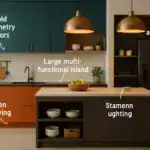Key Takeaways
- Saddle-stitched booklets require page counts in multiples of four.
- The ideal page range typically falls between 8 and 64 pages.
- Paper thickness and booklet size influence the maximum feasible page count.
Table of Contents
- Introduction
- Understanding Saddle Stitch Binding
- Why Page Counts Must Be Multiples of Four
- Ideal Page Ranges for Saddle-Stitched Booklets
- Impact of Paper Thickness on Page Count
- Design Considerations for Optimal Page Counts
- Alternative Binding Methods for Higher Page Counts
Saddle-stitched booklets strike a balance between affordability, versatility, and professional presentation, making them a favorite for catalogs, event programs, manuals, and marketing pieces. Choosing the best page count is crucial to ensure your booklet looks professional, binds securely, and delivers a positive reader experience. For those planning to create booklets, understanding specifics about binding and layout early in the process pays off. For an in-depth overview of print options and available customization, explore Printivity saddle stitch printing to help visualize your production goals and constraints. Factors such as paper type, finished size, and page design all play a role in determining the optimal setup for your project.
This guide covers the essential details you need to make the most informed decisions about saddle-stitched booklets. From the unique requirements of binding methods to the design tips necessary for maximizing impact, you’ll be well-prepared to plan your next publication.
Understanding Saddle Stitch Binding
Saddle stitch binding is a straightforward and widely used method where sheets of paper are nested one inside the other, then secured together with staples along the centerfold. This technique is especially common for marketing booklets, thin magazines, program guides, and educational materials due to its quick production and cost efficiency. Saddle stitching enables the booklet to open flat, enhancing readability, and is ideal for most short-run printing projects. Whether you’re working on a community newsletter or a corporate catalog, the elegance and simplicity of saddle stitching make it a top choice for a crisp, professional look.
Why Page Counts Must Be Multiples of Four
The physical structure of saddle-stitched booklets means that each sheet folded in half forms four individual pages—two on the front and two on the back. If you imagine printing and folding a single piece, you can see how it produces four surfaces—hence the requirement that total booklet page counts (including covers) must adhere to multiples of four: 8, 12, 16, 20, and onward. Attempting to produce a 10- or 22-page booklet is not practical, as it would result in blank or missing pages. This rule is central to planning your content during the design phase and ensures your final printed piece doesn’t have unsightly empty spreads or looks incomplete.

Ideal Page Ranges for Saddle-Stitched Booklets
The sweet spot for saddle-stitched booklets lies between 8 and 64 pages, though some slight variation is possible depending on your paper choices and finished dimensions. Publications shorter than 8 pages don’t typically have enough substance to need a binding, and those exceeding 64 pages risk durability issues: the booklet may be hard to close, or staples may not hold the spine securely. Staying within this range not only guarantees a strong, attractive binding but also maintains an easy-to-handle finished product your audience will appreciate. If your content exceeds the upper limit, it’s better to adjust the design, split content across multiple volumes, or consider a different binding style.
Impact of Paper Thickness on Page Count
Paper weight has a direct impact on the maximum viable page count for saddle stitching. Lighter papers, such as 80gsm or 90gsm, allow for higher page counts (up to 64 or even slightly higher). Thicker stock, such as 120gsm, 150gsm, or 170gsm, reduces the number of sheets that can be efficiently stitched since each additional page adds bulk to the fold. A thicker booklet may not close neatly or might become difficult for the staples to penetrate fully, compromising both appearance and durability. For example, many commercial printers recommend a maximum of 48 pages for 170gsm stock, and even fewer for heavier cover papers.
For the best result, strike a balance between a substantial feel and practical binding. Test dummies of your booklet can help you visualize the finished bulk and fit. If your design absolutely requires thick, luxurious paper, confirm limits with your printer before finalizing your layout.
For more examples and paper guidelines, see the U.S. Press overview of saddle stitch booklet printing.
Design Considerations for Optimal Page Counts
When working within the multiples-of-four restriction, clever design can make your content shine. Here’s how to get the most out of every page:
- Content Layout: Plan your sections and flow to align with major page breaks. Avoid awkward transitions that fall at the end of a spread or bury important content in less-visible locations.
- Use of Imagery: Images break up text and can be strategically placed to balance white space. They can also be used to fill single pages or spreads where your written content doesn’t land perfectly on a multiple of four.
- Blank Pages: If your final content leaves two or three pages at the end, use these creatively—add order forms, notes pages, acknowledgments, or simply leave them blank for a minimalistic look. Blank pages at the front or back can also act as buffer pages to protect the booklet’s content.
Pro Tips for Layout
- Use grids and templates designed for saddle-stitched booklets to maintain consistent margins and alignment across all pages.
- Proof carefully for flow—page numbers should always follow a logical order, and spreads should feel complete.
Alternative Binding Methods for Higher Page Counts
When your content demands more space than saddle stitching can support, it’s time to consider other binding methods. Each has its unique benefits:
- Perfect Binding: This method uses adhesive to bind pages and creates a flat spine, suitable for thick booklets, magazines, and books. It delivers a polished, bookstore-style finish and supports much higher page counts.
- Spiral Binding: Popular for manuals and workbooks, spiral binding allows booklets to lay flat and fold back on themselves, making note-taking and reading easier. Page limits are higher, although the final look is less formal.
- Wire-O Binding: Similar to spiral but with wire loops instead of plastic, this offers a refined finish perfect for calendars, notebooks, and conference materials where frequent handling is expected.
Choosing a binding method that fits your project size and usage ensures your finished product is both functional and impressive.











